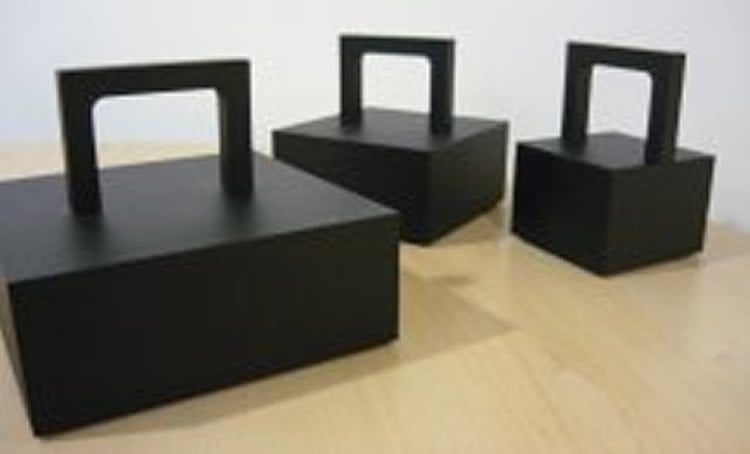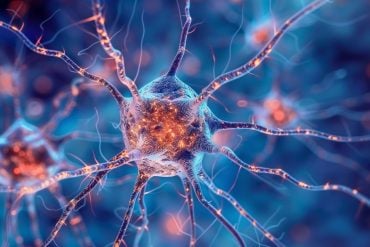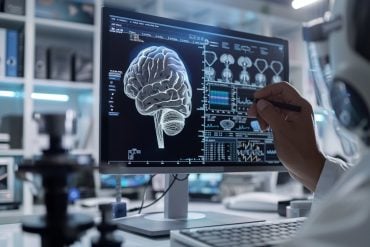Summary: University of Exeter researchers report people with prosthetic arms are not able to experience the ‘size-weight’ illusion as strongly as those without missing limbs.
Source: University of Exeter.
People with prosthetic arms or hands do not experience the “size-weight illusion” as strongly as other people, new research shows.
The size-weight illusion, which affects about 98 per cent of people, causes them to experience smaller objects as feeling heavier than larger objects of the same weight.
The study – led by the University of Exeter and the University of Strathclyde – compared the perception of people using their anatomical hands with that of amputees using prosthetic limbs.
The researchers were surprised to find that the size-weight illusion was twice as strong in non-amputees lifting with their hand as it was in the prosthetic users.
“This unexpected finding suggests that using a prosthesis might fundamentally affect the way people perceive the world,” said Dr Gavin Buckingham of the Department of Sport and Health Sciences at the University of Exeter.
“People using a prosthetic hand perceive real weight differences just like everybody else, but the effect of the size-weight illusion is halved.
“The reasons for this are a little mysterious. It might be to do with the lack of sensory receptors in a prosthetic hand, or might depend on how the prosthetic hand is attached to the stump.”
In a second experiment, the researchers tested how the illusion affected non-amputees who used a prosthetic hand simulator to lift objects.

The results were similar to those for amputees with prosthetic limbs – the effect of the size-weight illusion was halved.
Sarah Day, of the National Centre for Prosthetics and Orthotics in the Department of Biomedical Engineering at the University of Strathclyde, added: “Many amputees prefer not to use prosthetic arms or hands, but the reasons for this are not well understood. Research like this might help us better understand why.”
The research was carried out by academics at the University of Exeter, Liverpool Hope University, Manchester Metropolitan University, Heriot-Watt University and the University of Strathclyde.
Source: University of Exeter
Publisher: Organized by NeuroscienceNews.com.
Image Source: NeuroscienceNews.com image is credited to Lauren Jennings.
Original Research: Open access research in Psychonomic Bulletin & Review.
doi:10.3758/s13423-017-1425-2
[cbtabs][cbtab title=”MLA”]University of Exeter “People with Prosthetic Arms Less Affected by Common Illusion.” NeuroscienceNews. NeuroscienceNews, 22 January 2018.
<https://neurosciencenews.com/prosthetic-arms-illusion-8342/>.[/cbtab][cbtab title=”APA”]University of Exeter (2018, January 22). People with Prosthetic Arms Less Affected by Common Illusion. NeuroscienceNews. Retrieved January 22, 2018 from https://neurosciencenews.com/prosthetic-arms-illusion-8342/[/cbtab][cbtab title=”Chicago”]University of Exeter “People with Prosthetic Arms Less Affected by Common Illusion.” https://neurosciencenews.com/prosthetic-arms-illusion-8342/ (accessed January 22, 2018).[/cbtab][/cbtabs]
Abstract
The impact of using an upper-limb prosthesis on the perception of real and illusory weight differences
Little is known about how human perception is affected using an upper-limb prosthesis. To shed light on this topic, we investigated how using an upper-limb prosthesis affects individuals’ experience of object weight. First, we examined how a group of upper-limb amputee prosthetic users experienced real mass differences and illusory weight differences in the context of the ‘size–weight’ illusion. Surprisingly, the upper-limb prosthetic users reported a markedly smaller illusion than controls, despite equivalent perceptions of a real mass difference. Next, we replicated this dissociation between real and illusory weight perception in a group of nonamputees who lifted the stimuli with an upper-limb myoelectric prosthetic simulator, again noting that the prosthetic users experienced illusory, but not real, weight differences as being weaker than controls. These findings not only validate the use of a prosthetic simulator as an effective tool for investigating perception and action but also highlight a surprising dissociation between the perception of real and illusory weight differences.






